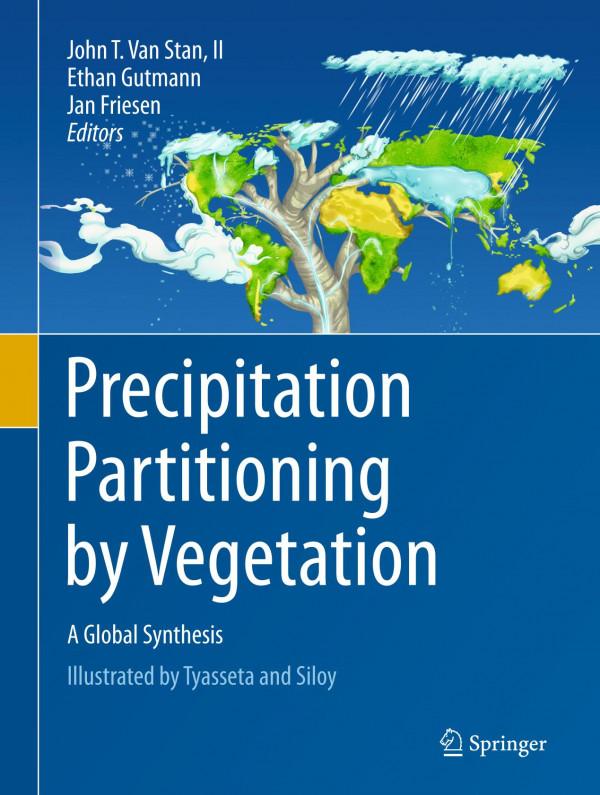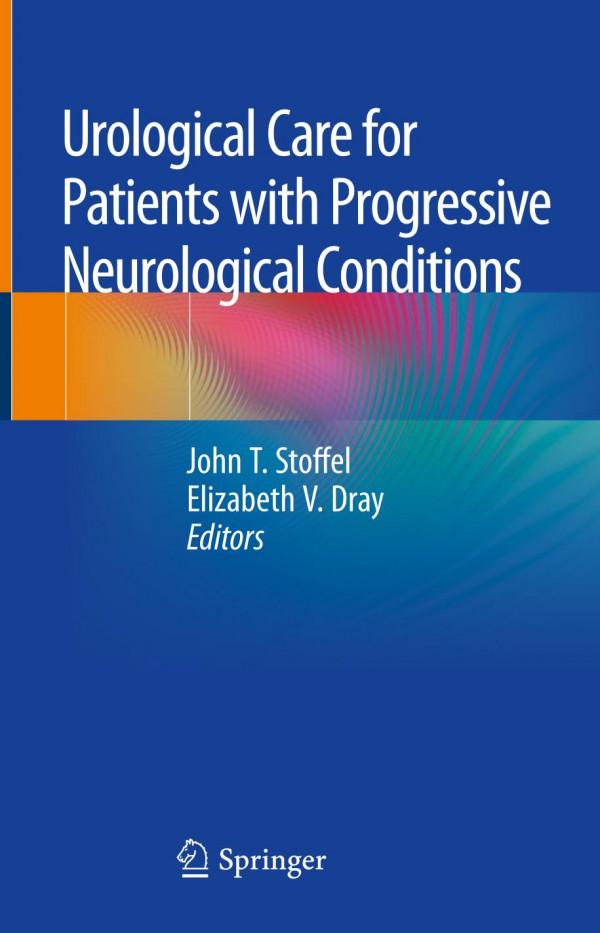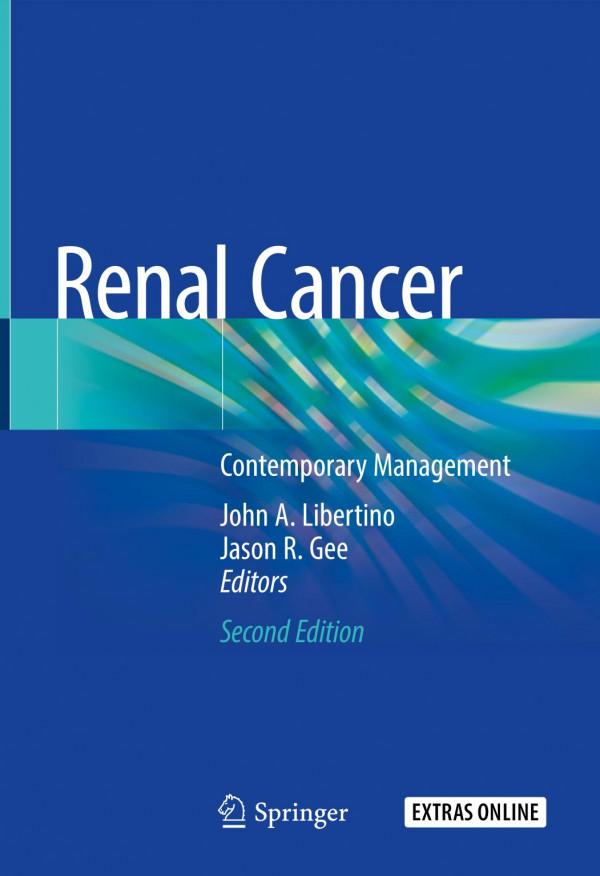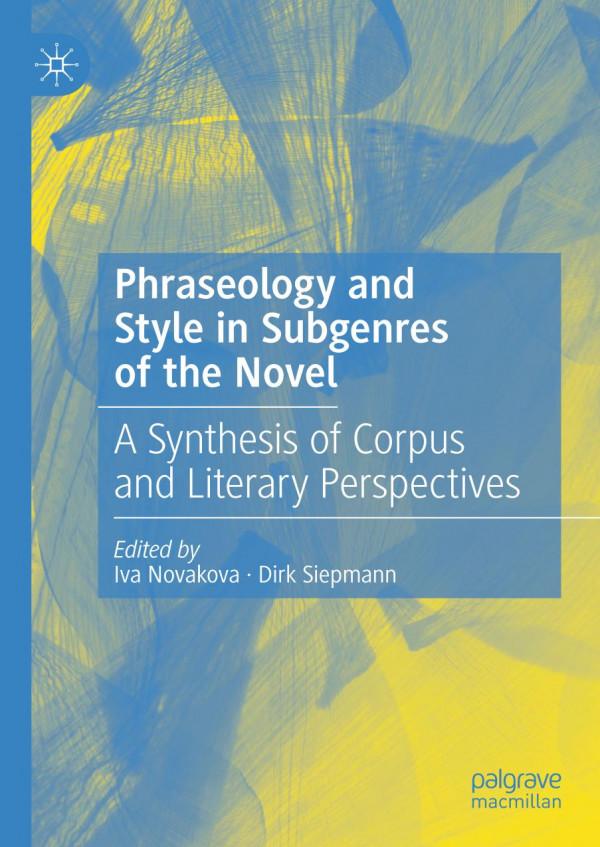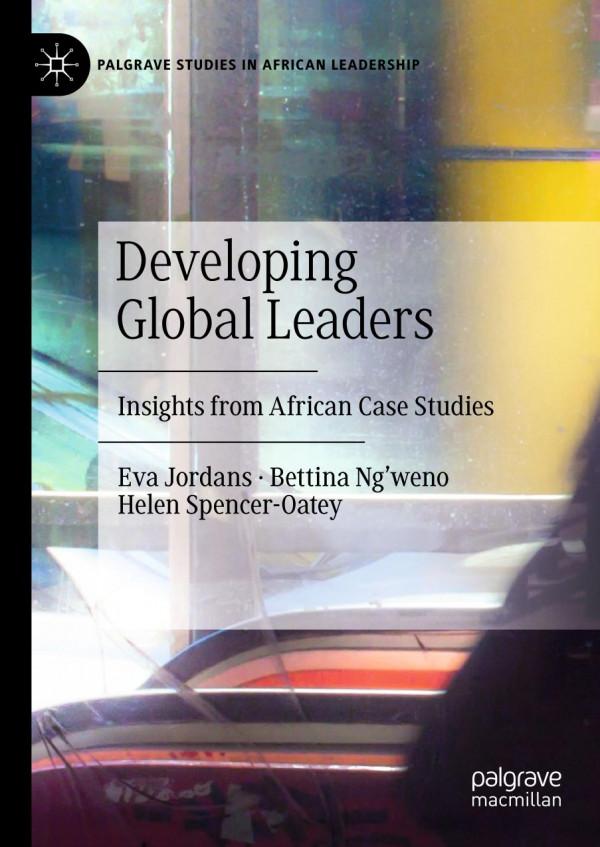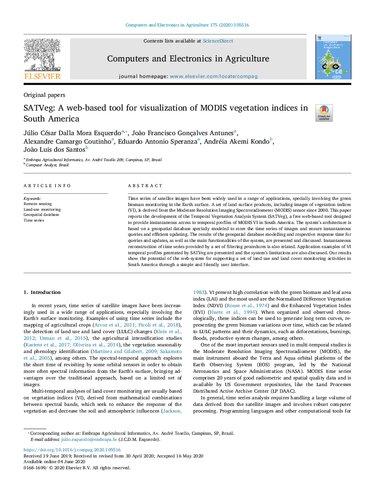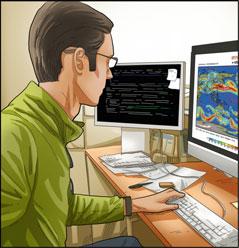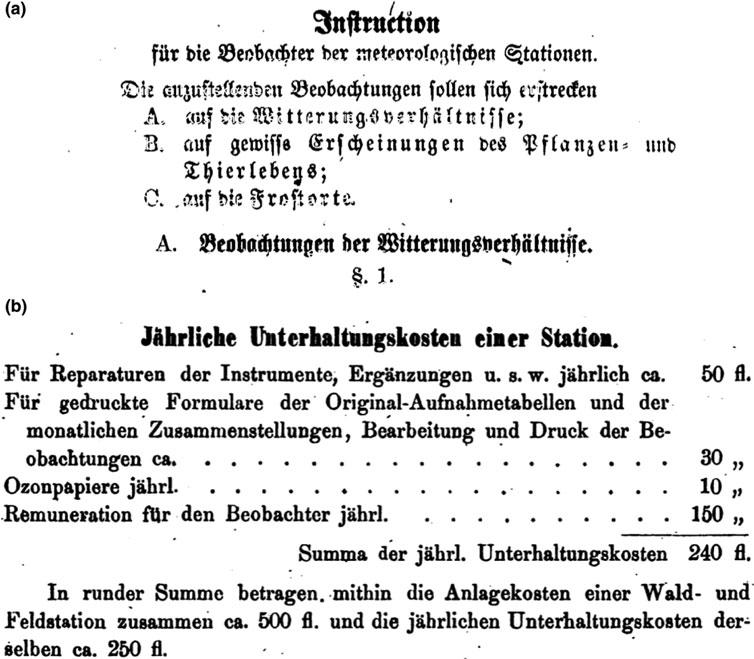AbouttheIllustrators
Imagecredit: © A.BagusTyasseta
A.BagusJatiTyasseta (left),orTyasseta(bagusseta1982@gmail.com ),isanIndonesian artistworkinginthecomicindustrycurrentlylivinginJakartawithhisfamily.Heobtaineda MasterofFineArtsinSequentialArtfromSavannahCollegeofArtandDesigninSavannah, Georgia(USA)wherehemetDr.VanStan.HehaspublishedseveralcomictitlesinIndonesia andiscurrentlyworkingforanAmericancomicpublisher.Hisotherartworkscanbeviewed inhisartstationpage: https://www.artstation.com/tyasseta
FredySiloy (right),orSiloy(Siloyfredy@gmail.com),isagamedeveloperatnoonand colorartistatnight.HeobtainedaBachelorofFineArtsfromInstitutTeknologiBandungin Bandung,WestJava(Indonesia).Heiscurrentlydevelopingachannelgameforkidsnamed TappyTaps andcasualgamechannelnamed IkanAsinProduction. Pleasecheckoutmoreof hisartworks: www.ikaanstudio.com.
1PrecipitationPartitioning,ortotheSurfaceandBackAgain: HistoricalOverviewoftheFirstProcessintheTerrestrial HydrologicPathway 1 JohnT.VanStan,IIandJanFriesen
2StorageandRoutingofPrecipitationThroughCanopies 17 AnnaKlamerus-Iwan,TimothyE.Link,RichardF.Keim, andJohnT.VanStan,II
3EvaporativeProcessesonVegetation:AnInsideLook 35 MiriamCoenders-Gerrits,BartSchilperoort,andCésarJiménez-Rodríguez
4AGlobalSynthesisofThroughfallandStem flowHydrometeorology 49 SeyedMohammadMoeinSadeghi,D.AlexGordon, andJohnT.VanStan,II
5ThingsSeenandUnseeninThroughfallandStem flow 71 AlexandraG.Ponette-González,JohnT.VanStan,II,andDonátMagyar
6SpatialVariabilityandTemporalStabilityofLocalNetPrecipitation Patterns ..................................................... 89 JohnT.VanStan,II,AnkeHildebrandt,JanFriesen,JohannaC.Metzger, andSandraA.Yankine
7GlobalModelingofPrecipitationPartitioningbyVegetation andTheirApplications
EthanD.Gutmann
8ThroughfallandStem flow:TheCrowningHeadwaters oftheAquaticCarbonCycle 121 AronStubbins,FrançoisGuillemette,andJohnT.VanStan,II
9InteractionsofEpiphyteswithPrecipitationPartitioning 133 GlendaMendieta-Leiva,PhilippPorada,andMaaikeY.Bader
10RelevanceofPrecipitationPartitioningtotheTreeWater andNutrientBalance
DougP.Aubrey
11RoleofPrecipitationPartitioninginLitterBiogeochemistry 163 RobertG.Qualls
12AReviewoftheEffectsofThroughfallandStem flowonSoilProperties andSoilErosion ............................................... 183 DavidDunkerley
13FlowPathwaysofThroughfallandStem flowThroughtheSubsurface .....
JanFriesen
14PrecipitationPartitioning HydrologicHighwaysBetweenMicrobial CommunitiesofthePlantMicrobiome? 229
JohnT.VanStan,II,CindyE.Morris,KyawAung,YakovKuzyakov, DonátMagyar,EriaA.Rebollar,MitjaRemus-Emsermann,StéphaneUroz, andPhilippeVandenkoornhuyse
15ValuingUrbanTreeImpactsonPrecipitationPartitioning .............. 253
DavidJ.Nowak,RobertCoville,TheodoreEndreny,RezaAbdi, andJohnT.VanStan,II
16KeyQuestionsontheEvaporationandTransportofIntercepted Precipitation 269
ScottT.Allen,DougP.Aubrey,MaaikeY.Bader,MiriamCoenders-Gerrits, JanFriesen,EthanD.Gutmann,FrançoisGuillemette, CésarJiménez-Rodríguez,RichardF.Keim,AnnaKlamerus-Iwan, GlendaMendieta-Leiva,PhilippPorada,RobertG.Qualls,BartSchilperoort, AronStubbins,andJohnT.VanStan,II
AuthorIndex 281
EditorsandContributors
AbouttheEditors
Imagecredit: © A.Bagus
Imagecredit: © A.Bagus Tyasseta
Imagecredit: © A.Bagus
JohnT.VanStan,II,Ph.D. isanEcohydrologistatGeorgia SouthernUniversityinSavannah,Georgia(USA).Heenjoys collecting fieldobservationsofwaterandelemental fluxesin vegetatedecosystemsduringstormsanddevelopingsensorsto overcomeobservationallimitationswhentheyarise.Hehas workedatsitesinNorthandCentralAmericaandEuropeto improveourunderstandingofhowprecipitationpartitioning affectsotherecosystemprocesseswithin,above,andbelowplant canopies.Healsonarratesfreeaudiobooks: https://librivox.org/ reader/9017.
EthanGutmann,Ph.D. isaHydrologistintheResearch ApplicationsLabattheNationalCenterforAtmospheric ResearchinBoulder,Colorado(USA).Hisbackgroundin hydrology,geology,andcomputersciencefoundahappy marriageinremotesensingandhydrologicandatmospheric modeling.Apassionfortheoutdoorshastakenhimtoremote cornersoftheworld,climbingmountainsinPeru,Nepal,and Tanzania.Healsoenjoysscientifi coutreach,havingdabbledin sciencebloggingatArsTechnicaandsciencevideography withEarthInitiatives.
JanFriesen,Ph.D. isanEcohydrologistattheDepartmentof CatchmentHydrology,HelmholtzCentreforEnvironmental Research UFZ,Leipzig(Germany).Hisresearchprimarily focusesonforestecohydrology,remotesensing,andsensor developmentwhereheappliesanddevelopsnewmonitoring solutionstobridgethegapbetweensitestudiesandremote sensing.Hehasextensiveexperienceinsemiaridand data-scarcecountriessuchasGhana,BurkinaFaso,Nigeria, andOmanandhisworkhasastrongconnectiontowater managementissues.
Contributors
RezaAbdi DepartmentofEnvironmentalResourcesEngineering,CollegeofEnvironmental ScienceandForestry,StateUniversityofNewYork,Syracuse,USA
ScottT.Allen DepartmentofEnvironmentalSystemScience,ETHZurich,Zurich, Switzerland
DougP.Aubrey SavannahRiverEcologyLaboratory,WarnellSchoolofForestryand NaturalResources,UniversityofGeorgia,Athens,USA
KyawAung DepartmentofGenetics,DevelopmentandCellBiology,IowaStateUniversity, Ames,USA
MaaikeY.Bader FacultyofGeography,UniversityofMarburg,Marburg,Germany; EcologicalPlantGeography,PhilippsUniversityofMarburg,Marburg,Germany
MiriamCoenders-Gerrits DelftUniversityofTechnology,Delft,TheNetherlands
RobertCoville TheDaveyInstitute,CollegeofEnvironmentalScienceandForestry,State UniversityofNewYork,Syracuse,USA
DavidDunkerley FacultyofScience,SchoolofEarth,AtmosphereandEnvironment, MonashUniversity,Clayton,VIC,Australia
TheodoreEndreny DepartmentofEnvironmentalResourcesEngineering,Collegeof EnvironmentalScienceandForestry,StateUniversityofNewYork,Syracuse,USA
JanFriesen DepartmentofCatchmentHydrology,HelmholtzCentreforEnvironmental Research – UFZ,Leipzig,Germany
D.AlexGordon DepartmentofGeologyandGeography,GeorgiaSouthernUniversity, Statesboro,Georgia
FrançoisGuillemette DepartmentofEnvironmentalSciences,CentreforResearchon Watershed-AquaticEcosystemInteractions(RIVE),UniversityofQuebecatTrois-Rivi éres, Trois-Rivières,Canada
EthanD.Gutmann ResearchApplicationsLaboratory,NationalCenterforAtmospheric Research,Boulder,CO,USA
AnkeHildebrandt DepartmentComputationalHydrosystems,HelmholtzCentreforEnvironmentalResearch – UFZ,Leipzig,Germany
CésarJiménez-Rodríguez DelftUniversityofTechnology,Delft,TheNetherlands
RichardF.Keim SchoolofRenewableNaturalResources,LouisianaStateUniversity, BatonRouge,LA,USA
AnnaKlamerus-Iwan FacultyofForestry,UniversityofAgricultureinKraków,Kraków, Poland
YakovKuzyakov DepartmentofAgriculturalSoilScience,Georg-August-Universität, Göttingen,Germany
TimothyE.Link WaterResourcesProgram,UniversityofIdaho,Moscow,ID,USA
DonátMagyar DepartmentofAerobiologyandPollenMonitoring,NationalPublicHealth Center,Budapest,Hungary
GlendaMendieta-Leiva FacultyofGeography,UniversityofMarburg,Marburg,Germany; EcologicalPlantGeography,PhilippsUniversityofMarburg,Marburg,Germany; PlantEcologyDivision-CORBIDI,Lima,Peru
JohannaC.Metzger InstituteofGeoscience,Friedrich-Schiller-UniversityJena,Jena, Germany
CindyE.Morris INRA,PlantPathologyResearchUnit407,PACAResearchCenter, Montfavet,France
DavidJ.Nowak ForestService,UnitedStatesDepartmentofAgriculture,Syracuse,USA
AlexandraG.Ponette-González DepartmentofGeographyandtheEnvironment,UniversityofNorthTexas,Denton,TX,USA
PhilippPorada DepartmentofBiology,InstituteofPlantScienceandMicrobiology, UniversityofHamburg,Hamburg,Germany
RobertG.Qualls DepartmentofNaturalResourcesandEnvironmentalScience,University ofNevada-Reno,Reno,USA
EriaA.Rebollar CentrodeCienciasGenómicas,UniversidadNacionalAutónomade México,Cuernavaca,Mexico
MitjaRemus-Emsermann SchoolofBiologicalSciences,UniversityofCanterbury, Christchurch,NewZealand
SeyedMohammadMoeinSadeghi DepartmentofForestryandForestEconomics, UniversityofTehran,Karaj,Iran
BartSchilperoort DelftUniversityofTechnology,Delft,TheNetherlands
JohnT.VanStanII AppliedCoastalResearchLaboratory,GeorgiaSouthernUniversity, Savannah,GA,USA
AronStubbins NortheasternUniversity,Boston,USA; DepartmentofMarineandEnvironmentalSciences,DepartmentofCivilandEnvironmental Engineering,DepartmentofChemistryandChemicalBiology,NortheasternUniversity, Boston,USA
StéphaneUroz INRA,BiogeochemicalCyclesinForestEcosystemsUnit,Nancy,France PhilippeVandenkoornhuyse EcoBio,Université deRennes,Rennes,France
SandraA.Yankine CivilEngineeringandConstructionManagement,GeorgiaSouthern University,Statesboro,Georgia
PrecipitationPartitioning,ortotheSurface andBackAgain:HistoricalOverview oftheFirstProcessintheTerrestrial HydrologicPathway
JohnT.VanStan,IIandJanFriesen
Abstract
Thischapterpresentsahistoryoftheinterdisciplinary fi eldfocusedonimprovingourunderstandingofthe firststepinthe terrestrialhydrologiccycle:precipitationpartitioningbyvegetation.Wedescribetheoriginsofinterest,rootedin observationsfrom “TheFatherofBotany,” Theophrastus(350BCE)andsynthesizetheearlyformalhydrologicand biogeochemicalresearch(*1800–1917)thatprovidedthefoundationformodernprecipitationpartitioninginvestigation. Toexaminethe field’spublicationandcitationtrendsoverthepastcentury(1918–2017),ameta-analysisofprecipitation partitioningresearchsampledfromtheThompsonReuter ’sWebofScienceispresentedanddiscussed.Finally,a summaryofresearchpublishedonthistopicthroughSeptember2018(whenthischapterwaswritten)isusedtodiscuss broadfuturedirectionsaswellastointroducetheoverallstructureofthisbook.
Keywords
Throughfall Stemflow Rainfall Snow Ice Fog History
1.1Introduction
Anyrain,snow,rime,orcondensate(fog,mistordew)attemptingpassagethroughavegetatedlandscapewillinevitably interactwithitsplantsurfaces.Theseprecipitation-vegetationinteractionsarethefocusofa fieldcalled, “precipitation partitioningbyvegetation, ” thathasrootsdeepintotheoriginsofnaturalscienceitself.Sinceprecipitationpartitioningis typicallythe firstprocesstoaltertheamountandpatterningofmeteoricwater,itaffectsallsubsequentterrestrialhydrologicalandrelatedecologicalprocesses(Savenije 2004, 2018).Thenatureofanybelow-canopyprecipitation(or “net precipitation ”) flux ’shydrologicandecologicalinfluencecandependonhowthatwaterpenetratedthevegetationcanopy, e.g.,asadripfromsurfacesandthroughcanopygaps(called “throughfall”)orasa flowdownthestem(called “stemflow”). Thepartitioningprocessalsoreturnsaportionofprecipitationbacktotheatmosphere(called “interception”)inthecanopy, theunderstoryandlitterlayer(GerritsandSavenije 2011),whichisoflargeenoughmagnitudetoinfluenceregionaland globalwater(Poradaetal. 2018)andenergybudgets(Davies-Barnardetal. 2014;VanderEntetal. 2014).Excellent historicalreviewsexistfor fieldswithwhichprecipitationpartitioningoverlaps foresthydrologyandbiogeochemistry (Andréassian 2004;McGuireandLikens 2011) butnonehavesummarizedanddiscussedhistoricalaspectsoftheprecipitationpartitioning fielditself.Thus,thischapterexaminesthehistoricalorigins,developmentsandmajoradvancements ofresearchseekingtoimproveourunderstandingofthe firstprocessintheterrestrialhydrologicpathwaythroughvegetated landscapes.
J.T.VanStan,II(&)
AppliedCoastalResearchLaboratory,GeorgiaSouthernUniversity,Savannah,GA,USA
e-mail: jvanstan@georgiasouthern.edu
J.Friesen
DepartmentofCatchmentHydrology,HelmholtzCentreforEnvironmentalResearch UFZ,Leipzig,Germany
e-mail: jan.friesen@ufz.de
© SpringerNatureSwitzerlandAG2020
J.T.VanStan,IIetal.(eds.), PrecipitationPartitioningbyVegetation, https://doi.org/10.1007/978-3-030-29702-2_1
We firstdescribetheoriginsofinterestregardinginteractionsbetweenvegetationandprecipitationand,then,discussthe earlyformalresearchstudiesthatprovidedthefoundationformodernprecipitationpartitioninginvestigation. Ameta-analysisofstudiespublishedinthis fi eldoverthepastcentury(1918–2017)ispresentedanddiscussed.Finally,a summaryofresearchpublishedinthe firstninemonthsof2018isusedtodiscussbroadfuturedirectionsaswellasto introducetheoverallchapterstructureofthisbookproject.
1.2Origins
Processesgoverningthecapture,storage,evaporation,andredistributionofprecipitationbyplantswerelittlediscussed beforethenineteenthcentury.However,asearlyas350yearsBCE,Greeknaturalistsbeganrecordingtheeffectsof precipitationpartitioningatthesurface,andmanyoftheseobservationsfascinatedscientiststhroughtheAgeofEnlightenmentandintomoderntimes.
Beginningwiththe first-knownscienti ficpublicationonplants, HistoriaPlantarum (350–287BCE),theGreeknaturalist andphilosopherTheophrastus(371–287BCE)describedmanyoftheecologicaleffectsnowattributed,inpartorinwhole, toprecipitationpartitioning.His fi rstdiscussionoftheseeffectstouchedonrainfallredistributionbythroughfall,although thistermandothermodernhydrologicterms(e.g.,stem flowandinterception)werenotyetexplicitlyused.Earlyinthethird volume,TheophrastusreviewsobservationsfromAnaxagoras(510–428BCE),Diogenes(412–323BC),andCleidemos (fifth–fourthcenturyBCE)ontherolethatrainfallredistributionplaysinthedispersalofseeds(sectioni,3),concludingwith hisownobservationsthatthroughfall “bringsdownmanyoftheseedswithit,andatthesametimecausesasortof decompositionofthesoilandofthewater” (sectioni,11)(Theophrastus 1483).Regardingstemflow, HistoriaPlantarum (volumeIV,sectioniii,4–5)reportsobservationsrelatedtothenowwell-recognizedcapabilityoftrees(Hildebrandtand Eltahir 2006),shrubs(Whitfordetal. 1997),herbs,likethyme(BelmonteSerratoandRomeroDíaz 1998),andgrasses (Roth-Nebelsicketal. 2012)tosurviveinaridenvironmentsthroughfunnellingdew,fog,andscantamountsofrainfallto theirrootsystems.Theophrastushypothesizedthatplantssituated “inthelandwherenorainfalls” weresustained “bythe dew” forheconsideredittobe “sufficient[water],consideringthesizeofsuchplantsandtheirnaturalcharacter.” Theidea thatprecipitationinterceptedbyplantcanopieswastakenupbytheplantwasalsodiscussedbyLeonardodaVinci,inhis notebooks(1478–1518CE),wherehestatesthat “the[rain]waterwhichfallsupontheshootcanrundowntonourishthe bud,bythedropbeingcaughtinthehollow[axil]attheinsertionoftheleaf.” Wateruptakebycanopysurfaceshasnow becomeawidely-observedphenomenon(seeChap. 10).Itwasalsoreportedthat figtreescan “becomediseasedifthereis heavyrain;forthenthepartstowardtheroot[wherestem flowinfiltrates]andtherootitself[wherestemflowcanpreferentially flow:JohnsonandLehmann(2006)]become,asitwere,sodden” (volumeIV,sectionxiv,6).
Eventheinterception,storageandevaporation,ofrainandsnowisbrieflyaddressedinTheophrastus’ observationsof silver fir(Abiesalba)trees.Hedescribesthisspecies’ foliageasbeing “sodensethatneithersnownorrainpenetratesit” (volumeIII,sectionix,6–7).Theeffectsofrainwaterentrainedon,and flowingacross,plantsurfaceswerealsodescribed duringhisstudiesofinfestationandpollination.Infestationofolivetreeswasdescribedasbeing “preventedfromappearing undertheskin[ofthefruit]ifthereisrainaftertherisingofArcturus[thenorthernspringtimestar]” (volumeIV,sectionxiv, 9).Wenowunderstandthatwithin-canopytransportofrainwatercanaffectthespreadofpathogens(Garbelottoetal. 2003), seealsoChap. 14 ofthisvolume.Theophrastusnotestheimportanceofavoidingrainfallduringartifi cialpollinationof fig trees(volumeII,sectionviii,1–3),asrainwaterentrainedonthecanopysurfacescanwashawaypollen,asobservedbyLee etal.(1996),andmayreduceavailablepollenforinsectpollinators.
Theophrastus’ observationsimpressedPlinytheElder(23–79CE),whocalledhim “themosttrustworthyoftheGreek writers” (Parejko 2003).Thus,itisnosurprisethatPlinywasthenextnaturalisttoobserveandreporttheeffectsof precipitationpartitioningbyvegetation.InPliny’s NaturalisHistoria (77–79CE)henotonlydescribesrainfallinterception andthroughfall,butevenqualitativelycomparesthedropletsizedistributionsofthroughfallbetweentreespecies! “The dropsofwaterthatfallfromthepine,the Quercus,andtheholm-oakareextremelyheavy,butfromthecypressfallnone” (volumeXVII,chapterxviii)(c.f.,HallandCalder 1993).Inthesamechapter,PlinyconfirmsTheophrastus’ observations thatsubstantialinterceptionislikelydueto “foliagebeingdenselypacked.” Then,hedescribesaneffectofprecipitation partitioningthatwasnotquantitativelyobserveduntilthetwentiethcentury:thecanopy’sabilityto “smooth” rainfall intensity(KeimandSkaugset 2004;TrimbleandWeitzman 1954), “thealder[canopy]isverydense itservesasan effectualprotectionagainstheavyrains.” Plinyalsosparkedscientificandpublicinterestaboutthechemicalcompositionof throughfallandstemflowthroughhisobservationofallelopathy,orthechemicalinhibitionoftheestablishmentandgrowth ofcompetingplants,intheshadowscastbycertaintrees,especially Juglans (walnut)species: “Theshadowofthewalnut
treeispoisontoallplantswithinitscompass” (volumeXVII,chapterxviii).Modernworkhasnotonlyidenti fiedthat allelopathiccompoundsareleachedfromwalnutleavesduringrainfall(JoseandGillespie 1998)butthatthisprocessoccurs inthecanopiesofotherspecies,like Fagussylvatica (Europeanbeech)(Bischoffetal. 2015).Plinyadvocatedforfuture naturalscienti ficinquiryonprocesseswithinthe “shadowsoftrees,” concludingthat “inthecaseofeveryvarietyofplant, theshadeisfoundtoacteitherasakindofnurseoraharshstep-mother.” Duringthe1350s,theMoroccanIslamicscholar, IbnBaṭṭūṭah,gaveperhapstheharshestaccountofrain-plantinteractionsduringhistravelsthroughsouthernTibet,stating thattherewere “poisonousgrassesgrowing,suchthatwhentherainsfalluponit,andrunintorrentstotheneighboring rivers,noonedaresofconsequencedrinkofthewaterduringthetimeoftheirrising:andshouldanyonedoso,hedies immediately.” (IbnBaṭṭūṭah 1356).DespitethisshockingaccountandPliny’spriorurgingforgreaterstudyoftheprocesses atplayintheblackboxenshroudedbythecanopy’sshadow,noknownattemptstomeasure,estimateormonitorthestorage, evaporation,andredistributionofprecipitationbyplantsoccurredforcenturies.
1.3TheFirstObservationsandDevelopmentofConceptualFoundations
1.3.1FoundationalHydrologicObservations
Europeanadventurersduringtheeighteenthcenturyreportedonthelinksbetweenprecipitationandvegetation(von HumboldtandBonpland 1807)andcaseswhereindigenouspeoplesusedprecipitation-vegetationinteractionstotheirbenefit (DeGalindoandGlas 1764).BothvonHumboldtandCaptainGeorgeGlaswitnessed,inparticular,thepeopleoftheCanary Islandsusingfogcapturebyvegetationcanopiestosignifi cantsupplementtheirwaterresourceneeds(DeGalindoandGlass 1764;Kunkel 2012).TheaccountofCaptainGlasisparticularlydetailedandhasbeenusedtointroducetherelevanceoffog interceptioninearlyresearch(Kerfoot 1968):
InoneoftheCanaryIslandsgrowsatreewhichfurnisheswatertotheinhabitantsandbeastsofthewholeplace … itsleavesconstantly distillsuchaquantityofwaterasissufficienttofurnishdrinktoeverycreaturein[El]Hierro,naturehavingprovidedthisremedyforthe droughtoftheisland. Onthenorthsideofthetrunkaretwotanksorcisterns.Oneofthesecontainswaterforthedrinkingofthe inhabitants,andtheotherthatwhichtheyusefortheircattle,washingandsuchlikepurposes.Everymorning,nearthispartoftheisland,a cloudofmistarisesfromthesea,whichthesouthandeasterlywindsforceagainstthefore-mentionedsteepcliffsothatthecloud advancesslowly andthenrestsuponthethickleavesandwide-spreadingbranchesofthetreefromwhenceitdistillsindrops.
Noquantitativeobservationsofprecipitationpartitioningweremadebytheseeighteenth-centuryEuropeanadventurers. Interestinprecipitationpartitioningwithinthescientificcommunityfullyawakenedinthemid-nineteenthcenturywhen Dove(1855),afteranalyzingrainfallobservationsinthetemperatezone,posedthequestionofhowchangesinforestcover mayinfluencerainfallpatterns.Thusmotivated,Krutzsch(1855)reviewedSwissandFrenchdeforestationworktodevelopa conceptualdescriptionofforestcanopyinterceptionprocessesandtheirpotentialinfluenceonrainfallintensity,soilorganic mattercontent,infiltrationanderosion.Althoughhedescribesforestcanopyinterception,nodirectobservationsarereported orcitedin1855.Nearlyadecadelater,Krutzsch(1863, 1864)reportsthe first-knowndirectobservationsofcanopy precipitationpartitioningafterupdatinghismonitoringnetworktoobservebelow-canopyprecipitation(throughfall)in Tharandt,Saxony,Germany.Toourknowledgethiswasthe firstnational,atthattimeassociatedtotheKingdomofSaxony, monitoringnetworkdedicatedtoforest-meteorologicalobservations.Thesethroughfallobservationswereusedtoestimate canopysaturationpointforthe firsttime:0.2mm(Krutzsch 1864).Adirectrelationshipbetweenrelativethroughfalland stormsizeacrossstormswasalso firstreported,withrelativethroughfallbeing9–57%ofstormsranging1.1–14.8mmin magnitude.AlthoughmultipleinsightsweregainedbyKrutzsch’s(1864)throughfallobservations,morequestions(and,asa result,moreinterest)aroseinthescientificcommunity.Broadermeasurementsofcanopyprecipitationpartitioning, includingstem flow,werebegunin1868inBavaria,GermanybyEbermayer(Ebermayer 1873;Bühler 1918)aftervisiting Krutzsch ’smeteorologicalmonitoringstationsinTharandt(Hölzl 2010).SimilartoKrutzsch ’smonitoringnetwork, Ebermayeralsosetupaseriesofnational(KingdomofBavaria)long-termobservatories.Similar fieldcampaigns,although onmorelocalscales(e.g.,experimentalforests,botanicgardens,orsingletrees),forprecipitationpartitioningwerebegunby researchersthroughoutmainlandEurope,e.g.,France[Mathieuin1866perClav é (1875)],Switzerland[Frankhauserin1869 perMauriceandFrécaut(1962)],andtheCzechRepublic(JohnenandBreitenlohner 1879).
Interestingly,bothKrutzschandEbermayerpublisheddetailsregardinginstrumentationaswellascostsperstationfor theirobservatories.Forexample,Fig. 1.1 showstheannualmaintenanceandobservercostsaswellastheoverallinstallation costsfortheBavarianobservatory.FortheSaxonobservatoryinstalledin1862–1863,theinvestmentcostswereestimatedto 87Thalerand4Neugroschen(Saxoncurrencyaround1862)whereastheannualcostforobservationamountedto30Thaler
Fig.1.1 Costsforthe a Saxonforest-meteorologicalobservatory(Krutzsch 1863)and b annualmaintenanceandobservercostsperstationforthe Bavarianobservatorynetwork(Ebermayer 1873)
(Krutzsch 1863).Thisequatestoapproximately$160(nineteenthcentury,i.e.,unadjustedforinflation).Observersthat workedatanystudysitelocationexperiencingsub-zerotemperatureswerepaidanextra20Thalers,amountingto50Thaler perstation.FortheBavarianobservatory,installedin1866,Ebermayerestimatedaninvestmentcostof500guilders (Bavariancurrencyatthetime)andannualmaintenanceandobservercostsof250guildersperstation(Ebermayer 1873). Throughfallobservationsbeganwithoutspatialreplication,comparingmeasurementsofoneopen fieldgaugeandone below-canopygauge(Ebermayer 1873).Despitethislimitation,Ebermayer(1873):(1)reportedthatannualrelative throughfallvariedsignificantlyacrossforesttypes(68–75%ofrainfall)andacrossfourseasonalleafstates;(2)estimatedthe firstsnowinterceptionamount(38%ofsnowfall);and(3)provideddetailedinstrumentationinformation.The firstdiscussion ofthroughfallspatialvariabilitywasbasedonobservationsfromGroß Karlowitz(nowVelké Karlovice,CzechRepublic)by JohnenandBreitenlohner(1879) althoughthenumberofgaugesdeployedwasnotspeci fied.Thisstudyalso firstreported theeffectofeventdurationoninterceptioncapacity(i.e.,short,lowintensityrainfallproducesgreaterinterceptionandthe oppositeconditionsincreasethroughfall).Awareoftheneedtoaccountforinterstormandspatialthroughfallvariabilitybut limitedbycostsandlogistics,Bühler(1892)distributedgaugesunderdifferentdegreesofcanopycoveranddifferentlyaged treesintwoSwissforests(includingsnow,butnotstemflow)andrecordeddiscretestormsizeandintensity.Underthis samplingdesign,Bühler(1892) firstfoundtheasymptoticrelationshipbetweenrelativeinterceptionandstormsize,where relativeinterceptionishighestforsmallstorms(<5mm),decreasinguntillargestorms(>10mm)andremaining more-or-lessstable.Hoppe(1896)conductedwhatisconsideredtobethe firsthigh-resolutionthroughfallstudywhere20 gaugesweredistributedalongtwocrossinglinesatadistanceof2minBrunneckandFarnleite,Austria(Fig. 1.2a). Impressively,this firsthigh-resolutionthroughfallstudyalsoincludedmeticulousphotogrammetricanalysesofcanopy closureanddensity(Fig. 1.2b).ThesepastresultsinspiredEbermayer ’scomprehensivemanuscript(synthesizingdatafrom Bavaria,Prussia,FranceandSwitzerland)andclearlyinfluencedhisdiscussionashenotedthathisthroughfallresultsshould betreatedas “minimalcrowninfluence” (i.e.,lowerboundaryconditions)ratherthananaverage(Ebermayer 1897).

Fig.1.2 PhotographstakenbyHoppe(1896)showing a the firsthigh-resolutionthroughfallmonitoringcampaignand b canopyclosureabovean examplethroughfallgauge.Adetailworthnotingisthepresenceofstemflowmonitoring(seethecollarconnectedtotrunkinthephotograph center)
Stemflowwas,reportedly,notmeasureduntil1868atEbermayer ’sJohannes-Kreuzsite;however,basedonlater publicationsitseemsthesestemflowobservationswereneverpublished(Bühler 1892;Ebermayer 1873;Ney 1894).The fi rst publishedstemflowobservationswerebyRiegler(1881)alongsideaconceptualdiscussionofthestemflowprocess.
Stemflowwasmeasuredfromfourisolatedtrees,eachadifferentspecieswithuniquecanopystructuring: Fagussylvatica, Quercusrobur, Acerplatanoides,and Abiesexcelsa (Riegler 1881).Hisdiscussionwasmorerobustthanhissampling campaign,synthesizingthescantstemflowdataavailableatthattimetosupporthypothesesaboutstemflow’srelationship withbranchangleandbarkroughness(Riegler 1881).HecitesaninterestingpersonalcommunicationwithProfessorKerner (likelyAntonJosefKernerattheUniversityofViennafrom1878to1895)aboutexperimentsthatinvolvedpouringsmall gristgrainsontobranchesandleavestovisualizewater flow(i.e.,stemflow)patterns(Riegler 1881).Wecouldnot findthe resultsoftheseexperiments.Riegler(1881)alsocollectedthroughfallandopenrainfall,ultimatelyconcludingthatprevious work(i.e.,Ebermayer 1873)requiredcorrectionforstemflowandrecommendingfutureworkincludestemflowinthe canopywaterbalance.Ney(1893, 1894)wasthe firsttocomprehensivelymeasureandestimatestand-scalestem flowand mayactuallyhavebeenthe firststemflowobserver,asEbermayer(1873)mentionedthatNeymadethestemflowobservationsatJohannes-Kreuzfrom1868to1871(that,asmentionedearlier,werenotpublished).Ney(1893)includedstemflow measurementsacrossforesttypes,leafstatesandprecipitationtypes namelyrain,snowandevendew.Surprisingly,his analysisextendsevenfurther,intotheinfluenceofstandage,interspeci fictraits,canopydensity(Ney 1893).Hisproceeding publicationsummarizedpreviousstemflowobservationsandemphasizedstemflow’simportancetonetprecipitationcalculations(Ney 1894).Althoughrarelycited,theresultsofNey(1893, 1894)confirmmanyofthelatetwentiethcenturyand earlytwenty-firstcenturyecohydrologyliterature(FriesenandVanStan 2019).
Bytheendofthenineteenthcentury,scientistshadachievedaprofoundunderstandingofmostprocessesunderlyingthe hydrologicalaspectsofprecipitationpartitioning,howtomeasuretheseprocesses,andhowtoestimatethosethatwerenot directlymeasurableatthattime(likecanopywaterstorage).Enoughobservationsanddiscussionshadbeenpublishedbythe earlytwentiethcenturythatZon(1912)andBühler(1918)wereabletodevelopcomprehensivereviewsofprecipitation partitioningstudieswithreferencetobothrainandsnow.Thesereviewshighlightedthroughfallandstemflowmeasurements andtheindirectestimateofinterception,leavingtheinterceptioncomponents,waterstorageandevaporation,understudied. Horton(1919)thenclosedthisgapbypresentingdirectestimatesofrainwaterstoragecapacityfordifferentleafstructures, discussinghowtodisentanglestorageandevaporationcomponentsofinterception,andplacingtheseinterceptioncomponentsintocontextalongsidenetprecipitationmeasurementsandwindconditions.Horton’s(1919)seminalpaper,being citedcopiouslysinceandcontinuingtobecitedtoday,thuscompletedtheconceptualfoundationuponwhichmodern precipitationpartitioningworkbegantobuild.
1.3.2FoundationalBiogeochemicalObservations
Quantitativeobservationsoftheexchange(leachingoruptake),transformation,andwash-offofdepositednutrientsduring precipitationpartitioningbeganincroplands.Theseagriculturalrootsstemfromnutrientcontentanalysesbecomingkeyto studiesontheefficacyoffertilizerapplicationmethodsduringthemid-to-late1800s(Johnson 1869).Indeed,conservationof fertilizerwasofsignifi cantsocioeconomicandculturalimportancetobothfarmersandnationsbeforedevelopmentofthe Haber-Boschmethodforsynthesizingammonia(Erismanetal. 2008).Despiteconjectureonnutrientexchangebetween leavesandprecipitationbyStephenHales(1727),wherehisobservationsofsubmergedleaves(Fig. 1.3)promptedthe hypothesisthat “nourishment isconveyedintovegetablethro’ theleaves,whichplentifullyimbibethedewandrain, whichcontainsalt,sulphur,etc.,” researchonbiogeochemicalaspectsofprecipitationpartitioningdidnotmatureuntilthe mid-twentiethcentury.Infact,chemicalleachingbetweenprecipitationandplantsurfaceswasnotgenerallyacceptedbythe publishingbiogeochemicalcommunityuntilitsexperimentalconfirmationviaisotopicallylabelednutrientsinthe1950s (Longetal. 1956;SilbersteinandWittwer 1951).Ofcourse,thelossofinternalsolutesfromdamagedordeadplant materialsintowaterhasbeenknownsincethedawnofhumancivilization(q.e.d.,popularplant-basedbeverages,likebeer, tea,orcoffee).Thedelayinrecognizingandquantifyingnutrientexchangesbetweenprecipitationandlivingplantsurfaces appearstobe,inlargepart,duetoanextensiveandsometimescontentiousdebatethatbeganinthe1870s assummarized byLeClercandBreazeale(1908).ThedebateseemstohavebeenrootedintheEarlofDundonald’s(1795)hypothesisthat soluteswithinplantsareprotectedbytheir “outwardsurface,” preventing “theirbeingacteduponbyrainormoisture.” This hypothesiswasoddlyfoundationaltohisoverarchingtheoryofnaturalscience,statingthat “theinsolubility,toacertain degree,ofthissystem[plantsurfaces],adoptedbynature,isundoubtedlypreferred foritisevidentthatifputrefactionor oxygenationhadpossessedthepowerofrenderingallthevegetablematter,byaspeedyprocess,solubleinwater … therains wouldhavewasheddownsuchextractsandsolublematters,asfastasformed,intotheriversandsprings,contaminatingthe watersandrenderingthemunfitfortheexistenceof fishes,orfortheuseofterrestrialanimals” (Dundonald 1795). Dundonald(1795)goesontodescribethe “perniciousconsequences” thatwouldresultshouldplantsurfaceschemically
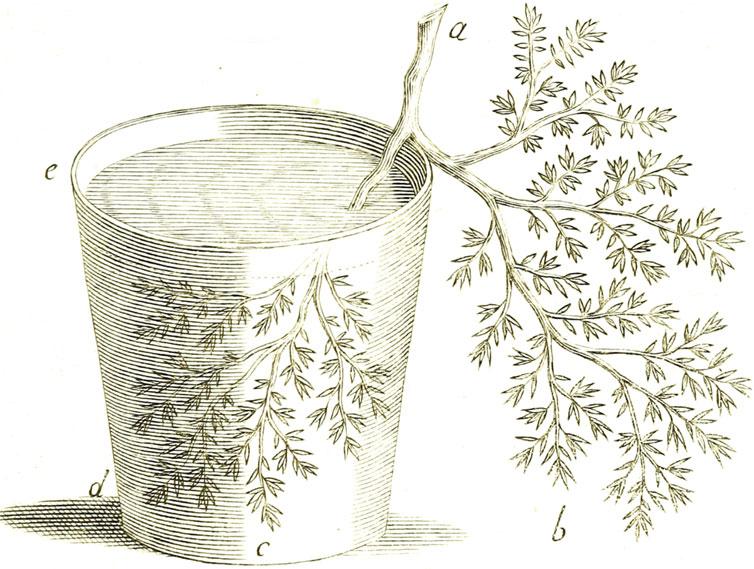
Fig.1.3 AnillustrationofabranchsubmersionexperimentperformedbyHales(1727).Observationsoftheleavesduringlong-termsubmersion inspiredHalestohypothesizeaboutthepossibilityofnutrientexchangebetweenprecipitationandleafsurfaces(imagefromHales 1727)
interactwithprecipitation,including “thesea,intheprocessoftime,wouldtherebyreceiveallthe[dissolved]vegetable produceofthedrylandandtheEarthwouldultimatelybecomebarren.” Thus,theworld’s firstauthoritativetreatiseonplant biogeochemistryarguedthatprecipitationandinternalplantsolutescouldnotinteractwithoutcatastrophicconsequences.
Majorleapsinchemicalandagriculturalsciencethroughoutthemid-1800s,dueprimarilytoGermany’sAgricultural ExperimentalStations,debunkedmanyofDundonald’stheoriesonplantbiogeochemistry(Johnson 1869).However,the Earl’stheorythatchemicalleachingbetweenplantsandprecipitationwasimpossible,remainedaningrainedbeliefofthe scientificcommunity.Thistheoryevenpersisteddespiteexperimentsshowingthatin-tactleaves(albeitdetachedfromthe stem)couldenrichpuri fiedwaterwithsolublesalts,ineightsuccessivetrials,andthatthemassofsaltdissolvedintothe waterwassimilartothemasslostintheleaves’ ash-ingredients(deSaussure 1804).Nineteenth-centuryplantscientists ascribeddeSaussure’s(1804)observationsofsoluteleachingtotheleavesbeingdamaged.Infact,onlydamagedplants werethoughttolosesolutestoprecipitation(Guilbertetal. 1931;Ritthausen 1856).Bythelate1800s,themostfamousplant physiologistofthetime,Dr.SamuelW.JohnsonofYale,stilldownplayeddeSaussure’s(1804)foliarleachingobservations, stating “allexperimentswhichindicategreatloss[ofsolutes]inthisway[i.e.,interactionwithprecipitation],havebeen madeonthecutplant,andtheirresultsmaynotholdgoodtothesameextentforuninjuredtissuesofplants” (Johnson 1869). Still,observationsweremountingthatperplexedplantbiogeochemists(whodeniedprecipitation-relatedsoluteexchange), beginningwiththe firstobservationsofcropnutrientcontentsatvariousgrowthstages(Norton 1847).Norton’s(1847) perplexingobservationwasthatcertainnutrientsincropsdidnotcontinuallyaccumulateuntilripening;rather,they maximizedaroundtheheadingperiodthendiminisheduntilharvest(LeClercandBreazeale 1908).Manyscientistsasked, “wherearethesenutrientsgoing?” andmostbelievedtheywerebeingtranslocatedbacktotherootsorsoil,buttheycould notbefoundthere(LeClercandBreazeale 1908).
Liebscher(1887)hypothesizedthatthislossofnutrientsinhealthycropswasduetoportionsoftheplantwitheringand decaying;however,nutrientlossesofthiskindonlyaccountedforaportion.Afterreviewingthenineteenth-centuryplant biogeochemicalliterature,Wehmer(1892)positedthat “plantfood” wasremovedfromleavesbyprecipitation.Althoughhe didnotcollectdatahimself,boththeestimateofthepotentialnutrientlossfromrain-relatedleachingandaconceptual processofleachingwereprovided(Wehmer 1892).LeClercandBreazeale(1908)statethatWehmer ’s(1892)reviewand hypothesiswereopposedbyhiscontemporariesto “sogreatanextentthatitseemstohavebeenrelegatedtothe
background.” Indeed,evenLeClercandBreazeale(1908),whoobservedrainfallenrichmentwithsaltsafterpassingthrough variouscropcanopies,stillconcludedthatonlywash-offprocessesoccur, “plantsexudesaltsupontheirsurfaces,andthe rainthenwashesthesesaltsbacktothesoil,” andstoppedshortofindicatingthatsoluteleachingcouldoccurbetween precipitationandplantsurfaces.AnothernotableworkontheenrichmentofrainfallbyplantexudatesisthereviewbyArens (1934).Thus,theapplicationofisotopicallylabelednutrientstobiogeochemicalresearchwasrequiredtoconfirmuptakeand leachingfromplantleavesexperimentally(Longetal. 1956;SilbersteinandWittwer 1951).
LeClercandBreazeale(1908)werenotthe firsttoobserveanddiscussthewash-offofplantexudatesbyprecipitation this,likeleaching,was fi rstobservedbydeSaussure(1804).Duringobservationsofcucumberleaves,henoticedexudations thatformedcrustsacrosstheleafsurface(deSaussure 1804).Hetestedtheexudatecrustandfoundthat,althoughitwasnot deliquescent,aportionwassolubleinwaterandlikelytobewashedoffbyprecipitation(deSaussure 1804).Johnson(1869) discussesthese,andsimilar findingsonothercrops,andindicatesthatthewash-offofexudatesduringprecipitationmay represent “aconsiderableshareofthevariationsinpercentageandcompositionofthe fixedingredientsofplants.” Itwasnot realizedthatprecipitationwash-offalsoincludes “dry” depositedatmosphericmaterials,orthatthesematerialshadbiogeochemicalimportance,untilthemid-twentiethcentury(Ingham 1950;Meetham 1950).ShortlyafterIngham’sand Meetham’s(1950)publications,scientistsrecognizeddrydepositioncontributionstonetprecipitationchemistry(Eriksson 1952;Tamm 1951).Thus,itwasinthe1950sthatarobustconceptualfoundationofprecipitationpartitioningbiogeochemicalaspects(thatincludedelementalleaching,uptake,transformationandwash-off)wasachieved.Thisdecadealso producedthe firstcomparativeobservationsofthroughfallchemistrybeneathvariousforestcanopies,speci ficallypine,oak andbirch(Tamm 1951).Tamm(1951)comparedthroughfallCa,K,NaandPconcentrationstoopenrainfalltohighlightthe signifi cantenrichmentofthesenutrientsinthroughfall(by4–70times).The firstannualthroughfallnutrientyieldswere reportedas25–30kgK,11kgCa,9kgNa,andnearly900kgofcarbohydratesha 1 year 1 foranappleorchard(Dalbro 1955).Inthesameyear,Will(1955)roughlyestimatedthroughfallnutrientyieldsforselectsolutes,butdidnotpublishthe fullstudyuntilafewyearslater(Will 1959).Thesenutrientyieldssurprisedmanyplantbiogeochemistsandplaced throughfall,particularlyleachingbythroughfall,intothestandardresearchmethodologyfornutrientbudgeting(Tukey 1966).However,biogeochemicalaspectsofstemflowwerestillunexamined.Stemflowproperties(acidityandparticulate content)were firstreportedbyPozdnyakov(1956),butstem flownutrientconcentrationsand fluxes,includinginterspeci fic andseasonalvariability,wouldnotbereporteduntilVoigt(1960).Then,thepotentialforstemflownutrient fluxestoexert signifi cantlocalizedecologicaleffectswasnotrecognizeduntilEatonetal.(1973)andMahendrappaandOgden(1973).
1.4TheLastCentury:ABibliometricAnalysisfrom1918to2017
Sincethehydrologicalandbiogeochemicalfoundationsofprecipitationpartitioningresearchwerelaid,thenewresearch topicsraisedandaddressedoverthelastcenturyinthis fieldhavebeensubstantialanddiverse.Ratherthanattempta completesummaryofkeyadvancementsinthis field,whichwouldlikelyrequiremuchmorespacethanavailableforthis chapter,weperformameta-analysisofpublicationandcitationtrendsfromThompsonReuter ’sWebofScience(WoS). Certainly,WoSrepresentsonlyaportionofthefullcorpusofliteratureonanysubject,placingsomelimitationsonour bibliometricanalyses seerecentdiscussionsonthistopic(HarzingandAlakangas 2016;MongeonandPaul-Hus 2016). TheWoSsampleofpublicationsandcitationsonprecipitationpartitioningisassumedtoprovidesuffi cientcoverageand stabilityofcoverage(i.e.,HarzingandAlakangas 2016);however,weacknowledgeabiasinWoStowardEnglishpublications,whichdidnotbecomethedominantlanguageofscienceuntilaftertheSecondWorldWar(Gordin 2015).Besides missingsomeearlyworksinotherlanguages,weareunsureoftheexactimpactofover-samplingEnglishpublicationson thebibliometricanalyses.Anotherconsiderationregardinglanguage:althoughkeytermsforprecipitationinterception processes canopy/leafandstem/trunkevaporationandwaterstorage wereusedbytheresearchcommunitypriorto1918, keytermsfornetprecipitation fluxes throughfallandstemflow arenottobefoundintheWoSpublicationdatabaseuntil EllisonandCoaldrake(1954).Notwithstanding,useofWoSenablesassessmentofthedisciplines(or “ResearchAreas” per WoS)whereprecipitationpartitioningresearchhasbeenpublishedandcited.
Queriesoverthepastcentury,excludingpatentsandlimitedtotitles,abstractsandkeywords,resultedinthefollowing totalnumberofpublicationsforbibliometricanalysis:3666forthroughfall,2405forrainfallinterception,1494forstemflow, 387forsnowinterceptionand136forfoginterception.Searchresultsweremanuallyreviewedtoremoveunrelated publicationsfromthedataset.Ofthe252researchareascategorizedbyWoS,rainfallinterceptionandthroughfallstudies representedthegreatestdiversityacrossdisciplines,beingpublishedinover90researchareas.Despitestem flowresearch havingthelateststart,ithasbeenpublishedin77researchareas.Snowandfoginterceptionstudieswererepresentedin
63and50researchareas,respectively.Thedominantresearchareaforpublicationofallprecipitationpartitioningtopicsover thepastcenturywas “EnvironmentalSciences&Ecology,” representing80–90%ofpublications.Forthroughfalland stemflow,journalsinthe “Forestry” researcharearankedsecond,havingpublishedatleast70%ofresearch.Asignificant portionofstudiesonallinterceptiontopicswerepublishedin “Meteorology&AtmosphericSciences” outlets.Thedominanceofforestryjournalsinthroughfallandstemflowalignswithnetprecipitation fluxeshavingprimarilybeeninvestigated fortheirroleinforestwaterandnutrientbudgetsoverthepastcentury(Parker 1983;VanStanandGordon 2018;Will 1955). Ontheotherhand,studiesonvegetationwaterstorageandevaporationofprecipitationhaveprimarilybeenmotivatedbyan interestinmoisturereturntotheatmosphere explainingthedominanceofmeteorologyandatmosphericsciencejournals overthepastcentury(Horton 1919;LundbergandHalldin 2001;Rutteretal. 1971;vanDijketal. 2015).Overone-quarter ofsnowinterceptionpaperswerepublishedinthemathematicsresearcharea,consistingofworkwithamodelingfocus (Hellström 2000;ListonandElder 2006;Pomeroyetal. 1998).Nearlyone-thirdoffoginterceptionpublicationsare publishedinthebiodiversityandconservationresearcharea,likelybecausemanyfog-reliantecosystemsarebiodiversity “hotspots” inneedofconservationscience(Bruijnzeeletal. 2011).
Precipitationpartitioningresearchhasbeenfrequentlycitedbythebroaderscientificcommunitybetween1918and2017. ThenumberofstudiesinWoSthatciteprecipitationpartitioningliteratureoverthepastcenturywas10times(stemflow)to 25times(snowinterception)thenumberofpublicationsonthesubject!Thesecitationsyielded100-yearH-indices(not includingself-citations)rangingfrom35(fog)to117(throughfall).Researchareascitingprecipitationpartitioningresearch overthepastcenturyweremorediversethanthepublicationresearchareas,by1.5–2times.Thenumberofresearchareas citingeachtopicwas106(foginterception)to140(throughfall),buttheenvironmentalscienceandecologyarenadominated thecitationsforalltopics.
Intotal,studiesfromallkeywordsearchesinWoSrepresentedauthoraffiliationsfrom121differentcountriesinevery worldregion.Apictographoftheseresultspercountry(forthetop25countries)showsthedominanceofEuropean,North American,EastAsian,andOceaniancountriesinpublicationoutputoverthepastcentury(Fig. 1.4).However,inexamining internationalpublicationtrends,itisimportanttorecognizethatmultiplesocioeconomic,political,andphysicalgeographic factorsunderly “why” scientistsstartinvestigatingprecipitationpartitioningprocessesandinteracttodetermine “how” these investigationsareenabledandsupported.Wealsoreiteratethatourbibliometricanalysisunder-representsnativelanguage scientificpublication,whichcouldincreasethenumberofpublicationsrepresentedinFig. 1.4.Afewmajorworldregions arestronglyrepresentedbyasinglecountryintheprecipitationpartitioningliterature:Brazil(SouthAmerica),India(South Asia),andMexico(CentralAmerica)(Fig. 1.4).AlthoughSouthAfricanresearcherswereactivefromtheearlydaysof precipitationpartitioningresearchinforestsandgrasslands(Beard 1955;Phillips 1926, 1928;Wicht 1941),theirworkinthe fieldslowedthroughthecentury,resultingintheirranking29th(n publications=48) tiedwithChile.OfallMiddle Easterncountries,Iranproducedthemostpublicationsonthistopicoverthepastcentury(31st, n publications=36),which

Fig.1.4 Pictogramofthe25countriesthathavepublishedprecipitationpartitioningresearchaccordingtotheWebofSciencedatabase,where boxsizeisweightedbynumberofpublicationsandthecolorindicateseachcountry’sworldregion
appearstohavebeenprincipallymotivatedbyconcernsaboutthedegradationoftheCaspianOrientalBeechForestsoverthe pastdecade(Ahmadietal. 2009).ForSoutheasternAsia,Indonesiahasproducedthemostpublicationsonthistopicperthe WoSdatabase(32nd, n studies=31),generallyrootedintheworkofCalderetal.(1986).However,the fi rstEnglish publicationonprecipitationpartitioningfromSoutheasternAsiaappearstobeanassessmentof fiveMalaysiancatchments (LowandGoh 1972).Todate,noworkinEnglishonthissubjecthasbeenreportedforCentralAsiaortheCongo,areaswith quitedifferentvegetation,eachequallymeritingprecipitationpartitioningresearchinordertocloseregionaldatagapsand achieveamacroscaletoglobal-scaleunderstanding.
1.5CurrentRelevance
Ninemonthsinto2018(atthetimeofwritingthischapter),over100papershavealreadybeenpublishedexamining precipitationpartitioninganditsrelationshipswithecosystemfunctions,showingthegrowingrelevanceofthe field.We focusthisreviewofrecentresearchonpublicationsandpresentationsthathavedescribednewprocessesandestimatesof statesor fluxes.Thus,studieswhichreportdataonpreviouslyknownprocesses,statesor fluxesfornewplantspecies, vegetationcovers,etc.,havebeenexcludedfromthefollowingdiscussion.Thereisalsonotenoughroominthischapterto fullydescribetheprocessesunderlyingeachofthesehighlights;assuch,theintentionisthatthereaderwillrefertothecited publicationorpresentationforgreaterdetail.Notallresultsindicatethatprecipitationpartitioningsigni ficantlyinfluencethe studiedecosystemproperties;forexample,noinfluencewasfoundforthroughfallonrootbiomass(Qietal. 2018), contradictinglong-citedsemi-quantitativeworkregardingthroughfallpatternsandrootpatterns(FordandDeans 1978).The oft-citedworkonstemflow’sroleingenerating “fertileislands” aroundplantrootsinaridenvironments(Whitfordetal. 1997)hasalsobeenchallengedbymeticulousmanipulationexperimentsthatfoundthestemflowinfluencealonewas inadequatetoengenderfertileislands(Lietal. 2017).Somenaturalandplantationforestsystems’ mayevenberesilientto changesinprecipitationpartitioning(Orságetal. 2018),andtheircanopyecohydrologicalprocesses,themselves,maybe resilienttoclimatechanges(Gimenoetal. 2018).Identifyingthedegreetowhichecosystemelements,processesandthe entireecosystems,themselves,areresilientorsensitivetointerception,throughfallandstem flowisacomplexandcritical pursuit.
Regardingrainfallinterceptionresearch,globalestimatesofrainfallstorageandevaporationfromvegetationhavebeen revisedtoincludenonvascularvegetation(lichensandbryophytes),increasingglobalvegetationwaterstoragecapacity, from0.4to2.7mm,andevaporationby61%(Poradaetal. 2018).Savenije(2018)commentedonthePoradaetal.(2018) interceptionestimates,statingthey “suggestthatwaterbalancecomputationsneedtoberevisited.” Indeed,muchworkthus farin2018hasexaminedrainwaterstorageandevaporationcontrolsinvegetation.Onehighlightinthisresearchvein includesworkbyKlamerus-IwanandWitek(2018)thatquantifiesandcharacterizestheeffectsofleafpollutantuptakeand infectiononleafwaterstoragecapacity.Signi ficantworkhasbeendoneoninterceptedwatertakenupbyleavesand redistributedwithinplants andanewreviewarticlesummarizesthesefoliarwateruptakepathways,thebiophysical conditionsunderlyingthem,andprovidesquantitativeassessmentofthisprocesswithinplantwaterbudgets(Berryetal. 2019).Thereisalsoagrowingawarenessoftheimportanceofstormeventsandprecipitationroutingwithinthecanopyto plant–microbeinteractions,especiallyregardingthe “diseasetriangle ” betweenhosts,pathogenicmicrobesandtheir environment(Aungetal. 2018).
Forthroughfall,signi ficantworkcontinuestofocusontheeffectsofitsreductiononmultipleecosystemfunctions,like netecosystemproductivity,soilmoisturedynamicsorsoilgasemissions(e.g.,Brachoetal. 2018;O’Connelletal. 2018; Samuelsonetal. 2018).Understandingofthroughfallkineticenergyandsoilerosioninforestswasrecentlyrevisedto recognizetheimportanceofunderstoryvegetationinfluences(Lacombeetal. 2018).Newinsightsinto fi ne-scalespatial variabilityinthroughfallamountandintensitieshavealsobeengained,revealingtheimportanceofpatternsinstorage “refilling” duetowithin-stormevaporation(KeimandLink 2018).Fine-scaletemporalvariabilityinthroughfallgeneration processesisonthehorizon,asnearreal-timeobservationssystemsarebeingtestedinthe fieldthatyieldwaterstableisotope measurementseveryfewminutes(Herbstrittetal. 2018).Ingeomorphology,recent findingsindicatethroughfallmeasurementsmaybeimportantforfalloutradionuclide-basedmethodsusedtodeterminestreamsuspendedsedimentsource andage(Karwanetal. 2018).Soilaggregatestabilityandassociatedorganiccarbonstocksappeartorely,inpart,on throughfall(Zhangetal. 2018).Forstemflow,an “alternativewatertransportsystem” forplantswasrecentlyidentifiedand describedthatreliesonstemflow(Biddicketal. 2018).Stemflowfromforests’ fogwaterharvestingmayplayanimportant roleinwaterresourcesalongthearidOmanicoast,havingbeenestimatedtoincreaseprecipitationavailableforrechargeby 20%(Friesenetal. 2018).Debatehasrecentlyarisenregardingstemflowresearch,wherescientistsareaskingwhatmetrics
(stemflowpercentage,yield,input,orfunnelingratio)underwhichcircumstancesshouldresearchersreportforstemflow (Carlyle-Mosesetal. 2018).Thisquestionwas,inpart,motivatedbyarecentglobalanalysisofstemflowinforeststhat indicatesstemflowmayexertsignifi cantecologicalinfluencesonnear-stemsoilbiogeochemicalprocessesviaresource limitation(VanStanandGordon 2018).
Therehavealsobeenmanynewinsightsfromstudiesinvestigatingallprecipitationpartitions.Recentworkindicatesthat dissolvedorganicmatterinthroughfallandstem flow(called “tree-DOM”)canbesignificantlyconcentratedcomparedto otherterrestrialhydrologic fluxes(VanStanandStubbins 2018),thattree-DOMisstructurallydiverse(Stubbinsetal. 2017), andthatitmayprovideahighlybiolabileCsubsidytosoilmicrobes(Howardetal. 2018).Inthetropics,acomprehensive evaluationofDOMopticalandisotopicpropertiesindicatedthattree-DOMmayreachstreamnetworks,whereitmaybe rapidlymetabolized(Osburnetal. 2018).Regardingagriculturalscience,recentworkhaselucidatedthroughfall’sand stemflow’sroleinpesticidetransport(Glinskietal. 2018),anditwasfoundthatprecipitationpartitioningshouldbe consideredwhenmanagingcropcanopiesforrainfedagriculture(Hakimietal. 2018;Nietheretal. 2018).
Finally,signi ficantprogresshasbeenmadeattheintersectionofmicrobiologyandprecipitationpartitioning.The fi rst reportofbacterialcellstransportedfromthecanopytothesoilsduringstormsfoundthatthis fluxcanequalquadrillionsof cellsha 1 year 1 (Bittaretal. 2018).Analysisofthebacterialcommunitystructureviahigh-throughputsequencing,found forthe firsttimethatthroughfallandstemflow fluxescancarrytaxaknowntoengageinsoilandlitterbiogeochemical processes,andthattheircommunitycompositionmaybeprincipallycontrolledbyatmosphericdepositionandstorm synopticpatterns(Teacheyetal. 2018).Thesebacterialhitchhikerssharetheirhydrologichighwaywithalargequantityof metazoans:1.2millionrotifers;216,000nematodes(manybeingbacterialfeeders!);160,000tardigrades;73,000mites;and 25,000collembolansyear 1 tree 1 (Ptatschecketal. 2018).Consideringtheabundanceoffungalspores(GönczölandRévay 2004),archaea(Watanabeetal. 2016),particulates(Bischoffetal. 2015),andsoon,thelatest fi ndingsshowthatthroughfall andstemflowmaybestbeanalogizedasephemeral,butcongested,hydrologichighwaysbetweentheplantcanopyandany receivingsurfaceorsubsurfaceecosystem.Futureresearchwill,undoubtedly,shedfascinatinginsightsintowhetherthese compoundsandcreaturessurvivetheirinteractionswithprecipitationpartitioning,wheretheyendup,whattheydothere, andhowmuchitmattersatvariousecosystemscales.
1.6Conclusions:TheStructureofThisVolume
Webeganthischapterand,thereby,thisbook,byfamiliarizingourreaderswiththePeripateticoriginsandfoundational observationsofprecipitation–vegetationinteractions.Itwastheimpactsofprecipitationpartitioningatthesurface,inthe “shadows” castbyplantcanopies,thatcaughttheeyesofthe “FatherofBotany” (Theophrastus)andPlinytheElderover 2000yearsago.Contrary,however,tothechronologicalorderofdiscoveryinthis fi eld,thisbookwilladdresstheimpactsof precipitationpartitioningonlyafterathoroughdescriptionoftheunderlyingprocessesbehindthe “shadow,” or,putmore scientifically,withintheblackbox:waterstorageonvegetation(Chap. 2)andevaporation(Chap. 3).Wefollowthe remainingprecipitationthatdrainsfromthecanopytothesurfaceasthroughfallandstem flow(Chap. 4)and,then,examine thedissolvedandparticulatecompositionofthesenetprecipitation fluxes(Chap. 5)aswellastheirspatiotemporalpatterns atthesurface(Chap. 6).Tocontextualize,forthe firsttime,allprecipitationpartitioningprocessesintotheglobalhydrologic cycleandclimatesystem,Chap. 7 describescommonparametrizationsandapplieslandsurfacemodelstoestimatethe impactsofprecipitationonregionalandglobalhydrologicforecastsandland-atmosphereenergyexchange.Precipitation interception,throughfall,andstemflowarealsoplacedintocontextwithinvegetatedecosystemprocesses,startingwiththeC cycle(Chap. 8),andthenverticallythroughtheecosystemitself:startingwiththeplantsinhabitingplantcanopies,epiphytes (Chap. 9),thenexaminingthewaterandnutrientbalanceofplantsrootedinsoils(Chap. 10),impactsonlitterbiogeochemistry(Chap. 11)andsoilphysicochemistry(Chap. 12),thenconcludingwiththerelevanceofprecipitationpartitioning tosubsurfacewaters(Chap. 13).Asprecipitationpartitioninginteractsacrossallhabitatsofvegetatedecosystems,a discussionisprovidedregardingitsinteractionswithmicrobiotainhabitatsthroughouttheplantmicrobiome(Chap. 14). Finally,theimportanceofprecipitationpartitioningtothehumanenvironmentishighlightedviadescriptionoftheeconomic valuationofitsecoservices(Chap. 15).Tobeascomprehensiveatextaspossibleonitssubject,the finalchapterconcludes withcurrentlyunansweredquestionsthatthe fieldconsiderstobekeytotheilluminationofprocessesattheconceptually shadowedintersectionofhydrologic,ecological,andclimatetheory.Itisourhopethatthisbookwilladdfueltothe firethat TheophrastusandPlinyignitedandmakeitbrighter brightenoughtoconcentrateitsbeamstowardthedarkerreachesof currenttheorywhilekeepingconspicuousthelessonsofpastresearch.
References
AhmadiMT,AttarodP,MohadjerMRM,RahmaniR,FathiJ(2009)Partitioningrainfallintothroughfall,stemflow,andinterceptionlossinan orientalbeech(Fagusorientalis Lipsky)forestduringthegrowingseason.TurkJAgricFor33(6):557–568 AndréassianV(2004)Watersandforests:fromhistoricalcontroversytoscienti ficdebate.JHydrol291(1–2):1–27
ArensK(1934)DiekutikuläreExkretiondesLaubblattes.JbwissBot80:248–300
AungK,JiangY,HeSY(2018)Theroleofwaterinplant–microbeinteractions.PlantJ93(4):771–780
BeardJ(1955)HydrologicalstudiesintheNatalWattleBelt.JSAfrForAssoc25(1):40–51
BelmonteSerratoF,RomeroDíazA(1998)Asimpletechniqueformeasuringrainfallinterceptionbysmallshrub: “interception flowcollection box”.HydrolProcess12(3):471–481
BerryZC,EmeryNC,GotschSG,GoldsmithGR(2019)Foliarwateruptake:processes,pathways,andintegrationintoplantwaterbudgets.Plant, CellEnviron42(2):410–423
BiddickM,HuttonI,BurnsK(2018)Analternativewatertransportsysteminlandplants.ProcRSocBBiolSci285(1884):20180995
BischoffS,SchwarzMT,SiemensJ,ThiemeL,WilckeW,MichalzikB(2015)Propertiesofdissolvedandtotalorganicmatterinthroughfall, stemflowandforest floorleachateofcentralEuropeanforests.Biogeosciences12(9):2695–2706. https://doi.org/10.5194/bg-12-2695-2015 BittarTB,PoundP,WhitetreeA,MooreLD,VanStanJT(2018)Estimationofthroughfallandstemflowbacterial fluxinasubtropicalOak-Cedar forest.GeophysResLett45(3):1410–1418. https://doi.org/10.1002/2017gl075827
BrachoR,VogelJG,WillRE,NoormetsA,SamuelsonLJ,JokelaEJ,Gonzalez-BeneckeCA,GezanSA,MarkewitzD,SeilerJR(2018)Carbon accumulationinloblollypineplantationsisincreasedbyfertilizationacrossasoilmoistureavailabilitygradient.ForEcolManage424:39–52 BruijnzeelL,MulliganM,ScatenaFN(2011)Hydrometeorologyoftropicalmontanecloudforests:emergingpatterns.HydrolProcess25(3):465–498
BühlerA(1892)DieNiederschlägeimWalde.1.Mittheilung.In:MitteilungenderEidgenössischenForschungsanstaltfürWald,Schneeund Landschaft,vol2(1/2),pp127–160
BühlerA(1918)DerWaldbaunachwissenschaftlicherForschungundpraktischerErfahrung:einHand-undLehrbuch,vol1,662pp.Ulmer, Stuttgart,Germany
CalderI,WrightI,MurdiyarsoD(1986)Astudyofevaporationfromtropicalrainforest WestJava.JHydrol89(1–2):13–31
Carlyle-MosesDE,SiIida,GermerS,LlorensP,MichalzikB,NankoK,TischerA,LeviaDF(2018)Expressingstemflowcommensuratewithits ecohydrologicalimportance.AdvWaterResour121:472–479
Clavé J(1875) Étudedemétéorologieforestière.RevuedesDeuxMondes(1829–1971)9(3):632–649
DalbroS(1955)Leachingofnutrientsfromapplefoliage.In:ProceedingsoftheXIVinternationalhorticulturalcongress,pp770–778 Davies-BarnardT,ValdesP,JonesC,SingarayerJ(2014)Sensitivityofacoupledclimatemodeltocanopyinterceptioncapacity.ClimDyn42(7–8):1715–1732
DeGalindoJDA,GlasG(1764)ThehistoryofthediscoveryandconquestoftheCanaryIslands.A.Pope&J.Swift deSaussureNT(1804)Rechercheschimiquessurlavegetation.Nyon DoveH(1855)UeberdieVertheilungderRegenindergemässigtenZone.AnnPhys170(1):42–59
DundonaldAC(1795)Atreatise,shewingtheintimateconnectionthatsubsistsbetweenagricultureandchemistry,addressedtothecultivatorsof thesoil,totheproprietorsoffensandmosses,inGreatBritainandIreland;andtotheproprietorsofWestIndiaestates.BytheEarlof Dundonald
EatonJS,LikensGE,BormannFH(1973)Throughfallandstemflowchemistryinanorthernhardwoodforest.JEcol495–508
EbermayerE(1873)DiephysikalischenEinwirkungendesWaldesaufLuftundBodenundseineklimatologischeundhygienischeBedeutung. Krebs,Aschaffenburg,Germany,253pp.
EbermayerE(1897)Untersuchungs-Ergebnisse überdieMengeundVerteilungderNiederschlägeindenWäldern.ForstlNaturwZeitschr6:283–301
EllisonL,CoaldrakeJ(1954)SoilmantlemovementinrelationtoforestclearinginSoutheasternQueensland.Ecology35(3):380–388
ErikssonE(1952)CompositionofatmosphericprecipitationII.Sulfur,chloride,iodinecompounds.Tellus4(4):280–303
ErismanJW,SuttonMA,GallowayJ,KlimontZ,WiniwarterW(2008)Howacenturyofammoniasynthesischangedtheworld.NatGeosci1 (10):636
FordE,DeansJ(1978)Theeffectsofcanopystructureonstemflow,throughfallandinterceptionlossinayoungSitkaspruceplantation.JAppl Ecol905–917
FriesenJ,ZinkM,BawainA,MüllerT(2018)HydrometeorologyoftheDhofarcloudforestanditsimplicationsforgroundwaterrecharge. JHydrolRegionalStud16:54–66
FriesenJ,VanStanJT(2019)EarlyEuropeanobservationsofprecipitationpartitioningbyvegetation:asynthesisandevaluationof19thcentury findings.Geosci9(10):423. https://doi.org/10.3390/geosciences9100423
GarbelottoM,DavidsonJ,IvorsK,MaloneyP,HüberliD,StKoike,RizzoD(2003)Non-oaknativeplantsaremainhostsforsuddenoakdeath pathogeninCalifornia.CalifAgric57(1):18–23
GerritsA,SavenijeH(2011)Forest floorinterception.In:Foresthydrologyandbiogeochemistry.Springer,Berlin,pp445–454
GimenoTE,McVicarTR,O’GradyAP,TissueDT,EllsworthDS(2018)ElevatedCO2 didnotaffectthehydrologicalbalanceofamaturenative Eucalyptuswoodland.GlobChangeBiol24(7):3010–3024
GlinskiDA,PuruckerST,VanMeterRJ,BlackMC,HendersonWM(2018)Analysisofpesticidesinsurfacewater,stemflow,andthroughfallin anagriculturalareainSouthGeorgia,USA.Chemosphere209:496–507
GönczölJ,Révay Á (2004)Fungalsporesinrainwater:stemflow,throughfallandgutterconidialassemblages.FungalDivers16:67–86
GordinMD(2015)Scienti ficBabel:howsciencewasdonebeforeandafterglobalEnglish.UniversityofChicagoPress,Chicago GuilbertH,MeadS,JacksonH(1931)Theeffectofleachingonthenutritivevalueofforageplants.Hilgardia6:13–26
HakimiL,SadeghiSMM,VanStanJT,PypkerTG,KhosropourE(2018)Managementofpomegranate(Punicagranatum)orchardsaltersthe supplyandpathwayofrainwaterreachingsoilsinanaridagriculturallandscape.AgrEcosystEnviron259:77–85
HalesS(1727)Vegetablestaticks:or,anaccountoffomestaticalexperimentsonthesapinvegetables:beinganessaytowardsanaturalhistoryof vegetation.Alfo,aspecimenofanattempttoanalyfetheair,byagreatvarietyofchymio-staticalexperiments;whichWereReadatFeveral MeetingsBeforetheRoyalSociety,vol1.W.andJ.InnysandT.Woodward HallRL,CalderIR(1993)Dropsizemodificationbyforestcanopies:measurementsusingadisdrometer.JGeophysResAtmos98(D10):18465–18470
HarzingA-W,AlakangasS(2016)GoogleScholar,Scopusandthewebofscience:alongitudinalandcross-disciplinarycomparison. Scientometrics106(2):787–804
HellströmRÅ (2000)Forestcoveralgorithmsforestimatingmeteorologicalforcinginanumericalsnowmodel.HydrolProcess14(18):3239–3256
HerbstrittB,GralherB,WeilerM(2018)Real-timeobservationsofstableisotopedynamicsduringrainfallandthroughfallevents.HydrolEarth SystSciDiscuss. https://doi.org/10.5194/hess-2018-301
HildebrandtA,EltahirEAB(2006)Forestontheedge:seasonalcloudforestinOmancreatesitsownecologicalniche.GeophysResLett33(11). https://doi.org/10.1029/2006gl026022
HölzlR(2010)UmkämpfteWälder:dieGeschichteeiner ökologischenReforminDeutschland1760–1860,vol51.CampusVerlag HoppeE(1896)RegenmessungunterBaumkronen.Frick,Vienna,Austria,75pp. HortonRE(1919)Rainfallinterception.MonWeatherRev47(9):603–623
HowardDH,VanStanJT,WhitetreeA,ZhuL,StubbinsA(2018)Interstormvariabilityinthebiolabilityoftree-deriveddissolvedorganicmatter (Tree-DOM)inthroughfallandstemflow.Forests9(5):236
IbnBaṭṭūṭah(1356)ThetravelsofIbnBaṭṭūṭah(trans:LeeSin1829).PublicLibraryofCambridge,London,291pp. InghamG(1950)Effectofmaterialsabsorbedfromtheatmosphereinmaintainingsoilfertility.SoilSci70(3):205–212 JohnenA,BreitenlohnerJ(1879)ComparativeBeobachtungenderNiederschlägenachFautrat’sMethode.Centralblattfürdasgesamte Forstwesen4(1):16–19
JohnsonSW(1869)Howcropsgrow.MacmillanandCo.,London,England JohnsonMS,LehmannJ(2006)Double-funnelingoftrees:stemflowandroot-inducedpreferential flow.Ecoscience13(3):324–333 JoseS,GillespieAR(1998)Allelopathyinblackwalnut(Juglansnigra L.)alleycropping.I.Spatio-temporalvariationinsoiljugloneinablack walnut–corn(Zeamays L.)alleycroppingsysteminthemidwesternUSA.PlantSoil203(2):191–197
KarwanD,PizzutoJ,AaltoR,MarquardJ,HarpoldA,SkalakK,BenthemA,LeviaD,SiegertC,AufdenkampeAK(2018)Directchannel precipitationandstormcharacteristicsinfluenceshort-termfalloutradionuclideassessmentofsedimentsource.WaterResourRes54(7):4579–4594
KeimRF,LinkTE(2018)Linkedspatialvariabilityofthroughfallamountandintensityduringrainfallinaconiferousforest.AgricForMeteorol 248:15–21
KeimRF,SkaugsetAE(2004)Alinearsystemmodelofdynamicthroughfallratesbeneathforestcanopies.WaterResourRes40(5). https://doi. org/10.1029/2003wr002875
KerfootO(1968)Mistprecipitationonvegetation.ForAbstr29:8–20
Klamerus-IwanA,WitekW(2018)Variabilityinthewettabilityandwaterstoragecapacityofcommonoakleaves(Quercusrobur L.).Water10 (6):695
KrutzschH(1855)UeberdenEinflussderWaldungenaufdieRegenverh<nissedergemassigtenZone.TharanderforstlichesJahrbuch11:123–141
KrutzschH(1863) ÜberdiezuforstlichenZweckeninSachseneingerichtetenmeteorologischenStationen.TharandterForstlJahrb15:72–104
KrutzschH(1864)DiezuforstlichenZweckeneingerichtetenmeteorologischenStationenunddieResultatederBeobachtungenimJahre1863. TharandterForstlJahrb16:216–226
KunkelG(2012)BiogeographyandecologyintheCanaryIslands,vol30.SpringerScience&BusinessMedia LacombeG,ValentinC,SounyafongP,DeRouwA,SoulileuthB,SilveraN,PierretA,SengtaheuanghoungO,RibolziO(2018)Linkingcrop structure,throughfall,soilsurfaceconditions,runoffandsoildetachment:10landusesanalyzedinNorthernLaos.SciTotalEnviron616:1330–1338
LeClercJA,BreazealeJF(1908)Plantfoodremovedfromgrowingplantsbyrainordew.USDepartmentofAgriculture LeeEJ,KenkelN,BoothT(1996)Atmosphericdepositionofmacronutrientsbypollenintheborealforest.Ecoscience3(3):304–309 LiJ,GilhoolyWP,OkinGS,BlackwellJ(2017)Abioticprocessesareinsufficientforfertileislanddevelopment:a10-yearartificialshrub experimentinadesertgrassland.GeophysResLett44(5):2245–2253
LiebscherG(1887)DerVerlaufderStoffaufnahmeundseineBedeutungfürdieDüngerlehre.JFuerLandwirtsch35 ListonGE,ElderK(2006)Adistributedsnow-evolutionmodelingsystem(SnowModel).JHydrometeorol7(6):1259–1276 LongW,SweetD,TukeyH(1956)Lossofnutrientsfromplantfoliagebyleachingasindicatedbyradioisotopes.Science123(3206):1039–1040 LowK,GohK(1972)Thewaterbalanceof fivecatchmentsinSelangor,WestMalaysia.JTropGeogra35:60–66 LundbergA,HalldinS(2001)Snowinterceptionevaporation.Reviewofmeasurementtechniques,processes,andmodels.TheorApplClimatol70 (1–4):117–133
MahendrappaM,OgdenE(1973)Effectsoffertilizationofablacksprucestandonnitrogencontentsofstemflow,throughfall,andlitterfall.CanJ ForRes3(1):54–60
MauriceA,FrécautR(1962)Hydrologie fluvialedel’Europecontinentale.RevueGéographiquedel’Est2(4):411–428 McGuireKJ,LikensGE(2011)Historicalrootsofforesthydrologyandbiogeochemistry.In:Foresthydrologyandbiogeochemistry.Springer, Berlin,pp3–26
MeethamA(1950)Naturalremovalofpollutionfromtheatmosphere.QJRMeteorolSoc76(330):359–371 MongeonP,Paul-HusA(2016)ThejournalcoverageofwebofscienceandScopus:acomparativeanalysis.Scientometrics106(1):213–228 NeyCE(1893)DerWaldunddieQuellen.Pietzcker,Tübingen,Germany,101pp. NeyCE(1894) ÜberdieMessungdesandenSchäftenderBäumeherabfließendenWassers.MitteilungenausdemForstlichenVersuchswesen Österreichs17:115–125
NietherW,ArmengotL,AndresC,SchneiderM,GeroldG(2018)Shadetreesandtreepruningalterthroughfallandmicroclimateincocoa (Theobromacacao L.)productionsystems.AnnForSci75(2):38 NortonJP(1847)Ontheanalysisoftheoat.AmJSciArts3(9)
O’ConnellCS,RuanL,SilverWL(2018)Droughtdrivesrapidshiftsintropicalrainforestsoilbiogeochemistryandgreenhousegasemissions.Nat Commun9(1):1348
OrságM,FischerM,TripathiAM, ŽaludZ,TrnkaM(2018)Sensitivityofshortrotationpoplarcoppicebiomassproductivitytothethroughfall reduction–estimatingfuturedroughtimpacts.BiomassBioenergy109:182–189
OsburnCL,Oviedo-VargasD,BarnettE,DierickD,OberbauerSF,GenereuxDP(2018)Regionalgroundwaterandstormsarehydrologic controlsonthequalityandexportofdissolvedorganicmatterintwotropicalrainforeststreams,CostaRica.JGeophysResBiogeosci123 (3):850–866
ParejkoK(2003)PlinytheElder ’ssilphium: firstrecordedspeciesextinction.ConservBiol17(3):925–927
ParkerGG(1983)Throughfallandstemflowintheforestnutrientcycle,vol13,pp57–133. https://doi.org/10.1016/s0065-2504(08)60108-7 PhillipsJ(1926)Rainfallinterceptionbyplants.Nature118(2980):837
PhillipsJ(1928)Rainfallinterceptionbyplants.Nature121(3045):354
PomeroyJ,ParviainenJ,HedstromN,GrayD(1998)Coupledmodellingofforestsnowinterceptionandsublimation.HydrolProcess12 (15):2317–2337
PoradaP,VanStanJT,KleidonA(2018)Significantcontributionofnon-vascularvegetationtoglobalrainfallinterception.NatGeosci11(8):563 PozdnyakovL(1956)Theroleofrainpenetratingbeneaththeforestcanopyintheprocessofexchangeofmaterialbetweenforestandsoil.Soils Fert19(4)
PtatscheckC,MilnePC,TraunspurgerW(2018)Isstemflowavectorforthetransportofsmallmetazoansfromtreesurfacesdowntosoil?BMC Ecol18(1):43
QiJ,MarkewitzD,RadcliffeD(2018)Modellingtheeffectofchangingprecipitationinputsondeepsoilwaterutilization.HydrolProcess32 (5):672–686
RieglerW(1881)Beobachtungen überdieAbfuhrmeteorischenWassersentlangdenHochstämmen.Mitteilungenderforstlichen Bundes-VersuchsanstaltWien2:234–246
RitthausenH(1856)Alterationofclover-haybywashingwithrain.JournalfuerPraktischeChemie65:8 Roth-NebelsickA,EbnerM,MirandaT,GottschalkV,VoigtD,GorbS,StegmaierT,SarsourJ,LinkeM,KonradW(2012)Leafsurface structuresenabletheendemicNamibdesertgrass Stipagrostissabulicola toirrigateitselfwithfogwater.JRSocInterface9(73):1965–1974
RutterA,KershawK,RobinsP,MortonA(1971)Apredictivemodelofrainfallinterceptioninforests,1.Derivationofthemodelfrom observationsinaplantationofCorsicanpine.AgricMeteorol9:367–384
SamuelsonLJ,KaneMB,MarkewitzD,TeskeyRO,AkersMK,StokesTA,PellCJ,QiJ(2018)Fertilizationincreasedleafwateruseefficiency andgrowthof Pinustaeda subjectedto fiveyearsofthroughfallreduction.CanJForRes48(2):227–236
SavenijeHHG(2004)Theimportanceofinterceptionandwhyweshoulddeletethetermevapotranspirationfromourvocabulary.HydrolProcess 18(8):1507–1511. https://doi.org/10.1002/hyp.5563
SavenijeHH(2018)Interceptedbylichens.NatGeosci11(8):548
SilbersteinO,WittwerS(1951)Foliarapplicationofphosphaticnutrientstovegetablecrops.In:ProceedingsoftheAmericanSocietyfor HorticulturalScience,1951,volDEC.AmericanSocietyforHorticulturalScience,701NorthSaintAsaphStreet,Alexandria,VA,pp179–190 StubbinsA,SilvaLM,DittmarT,VanStanJT(2017)Molecularandopticalpropertiesoftree-deriveddissolvedorganicmatterinthroughfalland stemflowfromliveoaksandeasternredcedar.FrontEarthSci5. https://doi.org/10.3389/feart.2017.00022
TammCO(1951)Removalofplantnutrientsfromtreecrownsbyrain.PhysiolPlant4(1):184–188
TeacheyME,PoundPT,OttesenEA,VanStanJT(2018)Bacterialcommunitycompositionofthroughfallandstemflow.FrontForGlobChang 1:7
Theophrastus(1483)HistoriaPlantarum,Tarvisii,BartholomaeusConfalonerius.RetrievedfromtheLibraryofCongress TrimbleG,WeitzmanS(1954)Effectofahardwoodforestcanopyonrainfallintensities.EosTransAmGeophysUnion35(2):226–234 TukeyJrH(1966)Leachingofmetabolitesfromabove-groundplantpartsanditsimplications.BullTorreyBotClub385–401 VanderEntR,Wang-ErlandssonL,KeysPW,SavenijeH(2014)Contrastingrolesofinterceptionandtranspirationinthehydrologicalcycle part2:moisturerecycling.EarthSystDyn5(2):471–489
vanDijkAIJM,GashJH,vanGorselE,BlankenPD,CescattiA,EmmelC,GielenB,HarmanIN,KielyG,MerboldL,MontagnaniL,MoorsE, SottocornolaM,VarlaginA,WilliamsCA,WohlfahrtG(2015)Rainfallinterceptionandthecoupledsurfacewaterandenergybalance.Agric ForMeteorol214–215:402–415. https://doi.org/10.1016/j.agrformet.2015.09.006
VanStanJT,GordonDA(2018)Mini-review:stemflowasaresourcelimitationtonear-stemsoils.FrontPlantSci9. https://doi.org/10.3389/fpls. 2018.00248
VanStanJT,StubbinsA(2018)Tree-DOM:dissolvedorganicmatterinthroughfallandstemflow.LimnolOceanLett. https://doi.org/10.1002/ lol2.10059
VoigtG(1960)Alterationofthecompositionofrainwaterbytrees.AmMidlNat321–326 vonHumboldtA,BonplandA(1807)Essaisurlagéographiedesplantes
WatanabeK,KohzuA,SudaW,YamamuraS,TakamatsuT,TakenakaA,KoshikawaMK,HayashiS,WatanabeM(2016)Microbialnitrification inthroughfallofaJapanesecedarassociatedwitharchaeafromthetreecanopy.Springerplus5(1):1596. https://doi.org/10.1186/s40064-0163286-y
WehmerC(1892)DiedemLaubfallvoraufgehendevermeintlicheBlattentleerung.JüstbotanischerJahresbericht1:152–163
WhitfordWG,AndersonJ,RicePM(1997)Stemflowcontributiontothe ‘fertileisland’ effectincreosotebush,Larreatridentata.JAridEnviron35 (3):451–457
WichtC(1941)Anapproachtothestudyofrainfallinterceptionbyforestcanopies.JSAfrForAssoc6(1):54–70
WillG(1955)Removalofmineralnutrientsfromtreecrownsbyrain.Nature176(4494):1180
WillGM(1959)NutrientreturninlitterandrainfallundersomeexoticconiferstandsinNewZealand.NZJAgricRes2(4):719–734
ZhangQ,ShaoMa,JiaX,ZhangC(2018)Understoryvegetationanddroughteffectsonsoilaggregatestabilityandaggregate-associatedcarbon ontheloessplateauinChina.SoilSciSocAmJ82:106–114
ZonR(1912)Forestsandwaterinthelightofscientificinvestigationforestservice,Unitedstatesdepartmentofagriculture.UnitedStates GovernmentPrintingOffice,Washington,USA,p106
